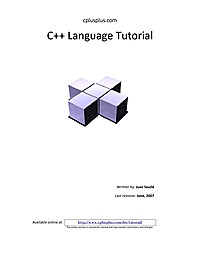
C++ Tutorial
These tutorials explain the C++ language from its basics up to the newest features of ANSI-C++, including basic concepts such as arrays or classes and advanced concepts such as polymorphism or templates. The tutorial is oriented in a practical way, with working example programs in all sections to start practicing each lesson right away
Arduino Programming Notebook
This notebook serves as a convenient, easy to use programming reference for the command structure and basic syntax of the Arduino microcontroller. To keep it simple, certain exclusions were made that make this a beginner’s reference best used as a secondary source alongside other websites, books, workshops, or classes. This decision has lead to a slight emphasis on using the Arduino for standalone purposes and, for example, excludes the more complex uses of arrays or advanced forms of serial communication.
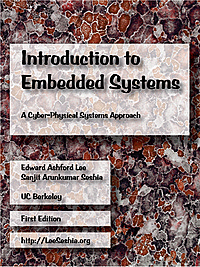
Introduction to Embedded Systems - A Cyber-Physical Systems Approach
This book strives to identify and introduce the durable intellectual ideas of embedded systems as a technology and as a subject of study. The emphasis is on modeling, design, and analysis of cyber-physical systems, which integrate computing, networking, and physical processes. This book is intended for students at the advanced undergraduate level or the introductory graduate level, and for practicing engineers and computer scientists who wish to understand the engineering principles of embedded systems.

Lessons in Electric Circuits - Volume III - Semiconductor
This book covers all of the common semiconductor devices and their principles of operation. However, the true value of this reference is in the fact that it provides key circuits and applications where they come in handy. A few of the devices that are covered in this book are Bipolar junction transistors, diodes, JFETs, thyristors, OPAMPs and FETs. This book will be a good reference in your library that has a clear style of explanation.
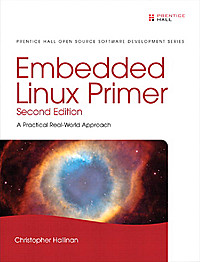
Embedded Linux Primer
This book brings together indispensable knowledge for building efficient, high-value, Linux-based embedded products: information that has never been assembled in one place before. Drawing on years of experience as an embedded Linux consultant and field application engineer, Christopher Hallinan offers solutions for the specific technical issues you're most likely to face, demonstrates how to build an effective embedded Linux environment, and shows how to use it as productively as possible.
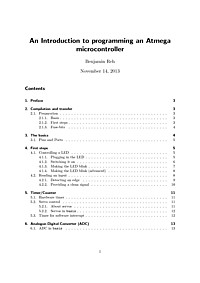
An Introduction to programming an Atmega microcontroller
This document an introduction into the programming of an Atmega microcontroller. It is separated into the fi rst part guiding like a tutorial for beginners and a second part which is a reference book to the functions provided in the basis. The examples and explanations provided are neither exhaustive nor complete. The only aim of this document is to lower the burden of getting started. Only a basic knowledge in C is required.
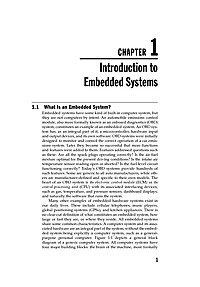
Introduction to Embedded Systems
This is the first chapter in the book Embedded Systems Hardware for Software Engineers.
Debugging Serial Buses in Embedded System Designs
Many embedded system designs utilize serial buses such as I2C, SPI , USB, RS-232/422/485/UART, CAN, LIN, FlexRay and I2S/LJ/RJ/TDM. Learn how to quickly and efficiently debug today’s serial buses with the powerful trigger, decode, and search capabilities of the MSO/DPO Series.
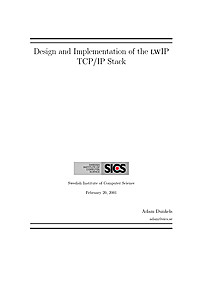
Design and Implementation of the lwIP Stack
LwIP is an implementation of the TCP/IP protocol stack. The focus of the lwIP stack is to reduce memory usage and code size, making lwIP suitable for use in small clients with very limited resources such as embedded systems. In order to reduce processing and memory demands, lwIP uses a tailor made API that does not require any data copying. This report describes the design and implementation of lwIP. The algorithms and data struc- tures used both in the protocol implementations and in the sub systems such as the memory and bu®er management systems are described. Also included in this report is a reference manual for the lwIP API and some code examples of using lwIP.
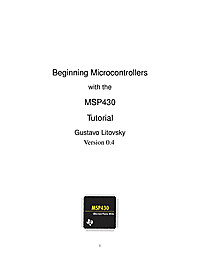
Beginning Microcontrollers with the MSP430 - Tutorial
From the Preface: I decided to write this tutorial after seeing many students struggling with the concepts of programming the MSP430 and being unable to realize their applications and projects. This was not because the MSP430 is hard to program. On the contrary, it adopts many advances in computing that has allowed us to get our application running quicker than ever. However, it is sometimes difficult for students to translate the knowledge they acquired when studying programming for more traditional platforms to embedded systems.
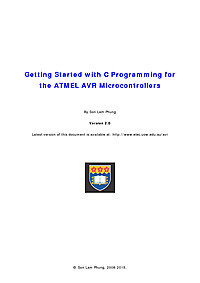
Getting Started with C Programming for the ATMEL AVR Microcontrollers
This tutorial provides information on the tool and the basic steps for programming the Atmel AVR microcontrollers using C. It is aimed at people who are new to this family of microcontrollers. The Atmel STK500 development board and the ATmega16 chip are used in this tutorial; however, it is easy to adopt the information given here for other AVR chips.

Introduction to Embedded Systems - A Cyber-Physical Systems Approach
This book strives to identify and introduce the durable intellectual ideas of embedded systems as a technology and as a subject of study. The emphasis is on modeling, design, and analysis of cyber-physical systems, which integrate computing, networking, and physical processes. This book is intended for students at the advanced undergraduate level or the introductory graduate level, and for practicing engineers and computer scientists who wish to understand the engineering principles of embedded systems.

Design and Implementation of the lwIP Stack
LwIP is an implementation of the TCP/IP protocol stack. The focus of the lwIP stack is to reduce memory usage and code size, making lwIP suitable for use in small clients with very limited resources such as embedded systems. In order to reduce processing and memory demands, lwIP uses a tailor made API that does not require any data copying. This report describes the design and implementation of lwIP. The algorithms and data struc- tures used both in the protocol implementations and in the sub systems such as the memory and bu®er management systems are described. Also included in this report is a reference manual for the lwIP API and some code examples of using lwIP.
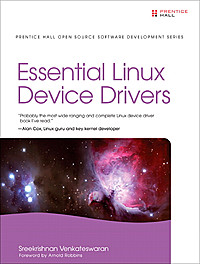
Essential Linux Device Drivers
This book is about writing Linux device drivers. It covers the design and development of major device classes supported by the kernel, including those I missed during my Linux-on-Watch days. The discussion of each driver family starts by looking at the corresponding technology, moves on to develop a practical example, and ends by looking at relevant kernel source files. Before foraying into the world of device drivers, however, this book introduces you to the kernel and discusses the important features of 2.6 Linux, emphasizing those portions that are of special interest to device driver writers.

Embedded Linux Primer
This book brings together indispensable knowledge for building efficient, high-value, Linux-based embedded products: information that has never been assembled in one place before. Drawing on years of experience as an embedded Linux consultant and field application engineer, Christopher Hallinan offers solutions for the specific technical issues you're most likely to face, demonstrates how to build an effective embedded Linux environment, and shows how to use it as productively as possible.

An Introduction to programming an Atmega microcontroller
This document an introduction into the programming of an Atmega microcontroller. It is separated into the fi rst part guiding like a tutorial for beginners and a second part which is a reference book to the functions provided in the basis. The examples and explanations provided are neither exhaustive nor complete. The only aim of this document is to lower the burden of getting started. Only a basic knowledge in C is required.
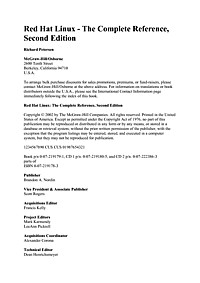
Red Hat Linux - The Complete Reference
This book identifies seven major Linux topics: basic setup, environments and applications, the Internet, servers, administration, and network administration. These topics are integrated into the different ways Red Hat presents its distribution: as a desktop workstation, network workstation, server, and development platform
Debugging Serial Buses in Embedded System Designs
Many embedded system designs utilize serial buses such as I2C, SPI , USB, RS-232/422/485/UART, CAN, LIN, FlexRay and I2S/LJ/RJ/TDM. Learn how to quickly and efficiently debug today’s serial buses with the powerful trigger, decode, and search capabilities of the MSO/DPO Series.
Arduino Programming Notebook
This notebook serves as a convenient, easy to use programming reference for the command structure and basic syntax of the Arduino microcontroller. To keep it simple, certain exclusions were made that make this a beginner’s reference best used as a secondary source alongside other websites, books, workshops, or classes. This decision has lead to a slight emphasis on using the Arduino for standalone purposes and, for example, excludes the more complex uses of arrays or advanced forms of serial communication.

Lessons in Electric Circuits - Volume III - Semiconductor
This book covers all of the common semiconductor devices and their principles of operation. However, the true value of this reference is in the fact that it provides key circuits and applications where they come in handy. A few of the devices that are covered in this book are Bipolar junction transistors, diodes, JFETs, thyristors, OPAMPs and FETs. This book will be a good reference in your library that has a clear style of explanation.

















